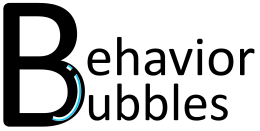According Cooper, Heron and Heward (2007), differential reinforcement is defined as “reinforcing only those responses within a response class that meets a specific criterion along some dimension (i.e. frequency, topography, duration, latency, or magnitude) and placing all other responses in the class on extinction.”. This will be further explained in the post below.
_____________________________________________________
There are a few types of differential reinforcement. Today, we will dive into some of the more common ones. These are the differential reinforcement of alternative behavior (DRA), the differential reinforcement of incompatible behavior (DRI), and the differential reinforcement of other behavior (DRO).
Differential Reinforcement of Alternative Behavior (DRA)
Definition: “A procedure for decreasing problem behavior in which reinforcement is delivered for a behavior that serves as a desirable alternative to the behavior targeted for reduction and withheld following instances of the problem behavior.” (Cooper, Heron, Heward, 2007).
For example, suppose there is a client in a classroom screaming for attention. One of the goals for a teacher/therapist would be to utilise a DRA by reinforcing the client to raise their hands (a more desirable alternative) for attention instead of screaming. In this case, a reinforcer is only provided to their client for raising their hands for attention and not provided if the client screams for attention. This strategy falls under a DRA as the screaming behavior can still occur even whilst the client is raising their hand.
Another example of a DRA strategy would be reinforcing a client to ask for a break instead of giving a client a timeout (i.e. break) when the client starts throwing items. As the client can engage in throwing whilst asking for a break, this is considered a DRA.
Differential Reinforcement of Incompatible Behavior (DRI)
Definition: “A procedure for decreasing problem behavior in which reinforcement is delivered for a behavior that is topographically incompatible with the behavior targeted for reduction and withheld following instances of the problem behavior.” (Cooper, Heron, Heward, 2007).
For example, suppose there is a client who flaps their hands repeatedly. A DRI strategy would be reinforcing a incompatible behaviour that competes with hand flapping. For example, the therapist can reinforce the client to keep hands still on their lap instead of flapping. This strategy falls under a DRI as the client would not be able to flap their hands at the same time as keeping them still on their lap.
Another example of a DRI strategy could be throwing a ball for the client to catch every time they start to hit someone. By choosing to catch the ball, they would not be able to hit a person at the same time. As such, these are incompatible behaviours that cannot occur at the same time.
Differential Reinforcement of Other Behavior (DRO)
Definition: “A procedure for decreasing problem behavior in which reinforcement is contingent on the absence of the problem behavior during or at specific times.” (Cooper, Heron, Heward, 2007).
There are a few types of DRO. The types of DRO consists of fixed interval DRO, variable interval DRO, and momentary DRO.
Looking at Interval DRO (i.e. Fixed and Variable – You can find out more about Fixed interval and variable interval in my previous post ‘reinforcement schedules’), The behaviour should not occur throughout the ENTIRE interval set. For example, let’s define the problem behavior as screaming. Should this be a fixed interval DRO (i.e. FI DRO) where an interval of 2 minutes is set, the problem behavior (i.e. screaming) cannot occur throughout the 2 minute interval for the client to be reinforced. Should screaming occur, the interval will be reset. This applied for a variable interval DRO (i.e. VI DRO) where the interval would vary rather than be constant (i.e. 1 minute, 3 minutes, 2 minutes = VI-2 minutes).
Looking at Momentary DRO, this could be both a fixed or variable interval as mentioned above. In this example (i.e. momentary DRO), the client is reinforced if they are not engaging in the behavior at the END of the interval. This implies that the client would be reinforced even if the client was engaging in the problem behavior (i.e. screaming) within the interval as long as they stopped before the interval ended.
__________________________________________________________________
I hope you guys have a much clearer picture about DRAs, DRIs, and DROs now. Feel free to comment should you need further clarification!
References
Cooper, J. O., Heron, T. E., & Heward, W. L. (2007). Applied behavior analysis (2nd ed.). Upper Saddle River, NJ: Pearson.

